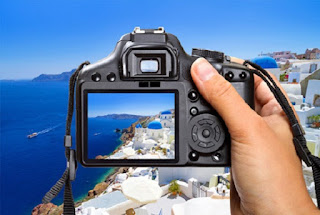How
to do Travel Photography?
Travel
photography resembles a time machine, freezing recollections from an excursion
that you can think back on and appreciate for quite a long time. Additionally,
it can help other people find new motivation. Each movement objective has its
look, culture, history, individuals, emotions, scenes, and stories.
Figuring
out how to catch these subjects through photographs passes on the soul of a
spot to other people, giving them a brief look at what it very well may
resemble to wander there. I never went to class for photography. But then here
I am present, making my living as an expert travel blogger and picture-taker
who routinely licenses pictures to the travel industry sheets, brands, and once
in a while polished magazines.
I've
gradually taken in the procedures of movement photography over long stretches
of understanding books, viewing on the web instructional exercises, and
customary practice to improve my art. You can get familiar with this way as
well — if you put in the exertion! Beneath you'll locate my #1 learner head out
photography tips to help improve your pictures during your next get-away!
No1: Trip Location Scouting:
Peruse
travel manuals about your objective. Scour the web for articles and blog
entries to help give you thoughts on photographs. Converse with companions who
have been there Contact different picture takers Become more learned about which pictures will
catch the substance of a spot. A portion of my #1 apparatuses for movement
photography research is Instagram and Google Image Search. I use them to
realize where notorious areas are. Genuine postcard racks are likewise an
extraordinary device for assisting with making a "shot rundown".
When
I know the names of potential photograph areas, I'll accomplish more
exploration. Which season of the day has the best light? How troublesome is it
to arrive at certain vantage focuses? What time does a fascination open, and
when will traveler traffic below? What will the climate resemble?
Meandering
around without any plans has its place, yet being solid and steady with
research in advance saves time so you can completely focus on delivering
astonishing travel photography once you're there, and expand your time.
No2: Wake Up Early:
Whoever
wants it most will get the prize. I'm certain you've heard that expression.
Indeed, it's likewise valid for movement photography. Light is the main element
for extraordinary photography — and delicate, warm, morning light makes
astounding pictures. Getting up early additionally implies you'll need to
manage fewer sightseers and different picture takers. Simply arrive early right
when it opens and you'll practically have the spot to yourself!
Dawn
isn't the lone chance to get great light. Dusks are likewise incredible. The
hour after dawn and the prior hour nightfall is nicknamed "brilliant
hours" on account of their delicate, warm tones and eye-satisfying
shadows. "Blue hour", is the hour after nightfall (or before dawn)
when the sky is as yet blue, yet city lights are turned on. In the examination,
shooting photographs around the early afternoon on a splendid bright day is
likely the most horrendous time for movement photography! Truth be told at
times I'll simply sleep during the center of the day so I have more energy for
early morning and night photography missions when the light is ideal.
No3: Talk To People Before Asking:
Capturing
nearby individuals in an unfamiliar nation is intense for some picture takers.
Consider the possibility that they don't get you. Imagine a scenario where they
state no. Will they get annoyed? It took me two or three years to get open to
shooting pictures of local people, and even now I get somewhat apprehensive.
In
any case, I've taken in the key is to converse with individuals first. Make
proper acquaintance. Request headings Purchase a trinket. Praise them on
something. Visit for a couple of moments BEFORE requesting a photograph. It's
far less intrusive along these lines.
Continuously
approach authorization for close-ups as well Go through 15 minutes figuring out
how to state "would I be able to make a photo" or "would I be
able to take your representation" in the nearby language before you show
up. Individuals truly like the exertion, and it's an incredible method to make
another companion.
A
few people will say no. Some will request cash (I in some cases pay, however
that is up to you). It's not the apocalypse. Express gratitude toward them for
their time, grin, and proceed onward to another person and attempt once more.
In reality, the more you get dismissed, the simpler it will inquire!
No4: Rule Of Thirds In Photography:
One
of the most fundamental and exemplary photography tips, understanding the Rule
of Thirds will assist you with making adjusted creations. Envision separating a
picture into thirds on a level plane and vertically, so it's part into various
segments.
The
objective is to put significant pieces of the photograph into those areas and
help outline the general picture that's satisfying to the eye.
For
instance, putting an individual along the left lattice line instead of straightforwardly
in the middle Or on the other hand keeping your frame of reference on the base
third, instead of parting the picture down the middle. Make sure to keep that
skyline straight as well!
Making
utilizing the Rule out of Thirds is effortlessly done by turning on your
camera's "lattice" include, which shows a standard of thirds network
straightforwardly on your LCD screen explicitly for this reason.
Presently,
before you form a movement photograph, you should ask yourself: What are the
central issues of interest in this shot? Where would it be advisable for me to
deliberately put them on the matrix? Focusing on these subtleties will improve
the vibe of your pictures.
No5: Pack A Lightweight Travel Tripod:
I
figure more individuals should utilize lightweight travel mounts. A mount
permits you to set your camera position and keep it there. With the camera
fixed, you would then be able to take as much time as necessary for organizing
the ideal synthesis.
You
can likewise change presentation settings, the center focuses, and truly invest
energy focusing on the picture you need to make. Or then again utilize
progressed strategies like HDR, center stacking, and displays. Stands enable
you to shoot a lot of more slow shade speeds without stressing over hand-held
camera shake. You can keep your ISO low (for less sensor commotion) and utilize
more modest gaps, so a greater amount of the picture is in core interest.
You'll
have more noteworthy inventive command over your camera's manual settings when
utilizing amount. This doesn't mean you need to haul a stand around with you
all over the place. I don't.




0 Comments